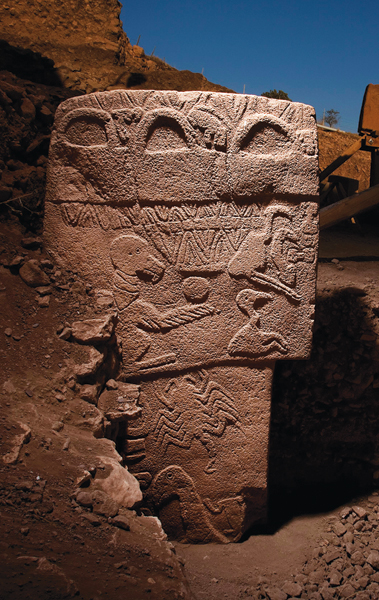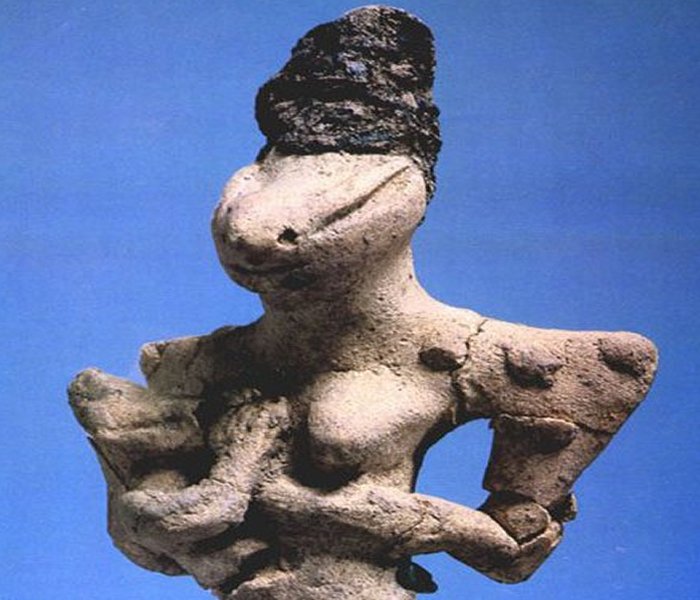It looks like you're using an Ad Blocker.
Please white-list or disable AboveTopSecret.com in your ad-blocking tool.
Thank you.
Some features of ATS will be disabled while you continue to use an ad-blocker.
share:
a reply to: Kantzveldt
Please, could someone post a pic of the dragon monolith of La venta? From south america.
I have forgotten how to.
You can see the basket in his hands. I have researched the baskets for ten years, i have not gotten anywhere.
But a few ufo sightings mentions these baskets also.
-edit, its monument 19, from la venta.
Please, could someone post a pic of the dragon monolith of La venta? From south america.
I have forgotten how to.
You can see the basket in his hands. I have researched the baskets for ten years, i have not gotten anywhere.
But a few ufo sightings mentions these baskets also.
-edit, its monument 19, from la venta.
edit on 18-8-2016 by solve because: monument 19
a reply to: Kantzveldt
Thank you.
I have however, come to the conclusion, that in the past there was a (perhaps) worldwide cult, that was based on, and held together by hallucinatory elements. In my opinion, this is the only way (violence works too) you can create "true believers"
that will work together, because they have the same experience, it works the same as revelations of Judaism, i am talking about mass revelations.
But every time, when i try to present this possibility, torches are lit, and stones are thrown. But that`s ok.
Thank you.
I have however, come to the conclusion, that in the past there was a (perhaps) worldwide cult, that was based on, and held together by hallucinatory elements. In my opinion, this is the only way (violence works too) you can create "true believers"
that will work together, because they have the same experience, it works the same as revelations of Judaism, i am talking about mass revelations.
But every time, when i try to present this possibility, torches are lit, and stones are thrown. But that`s ok.
a reply to: solve
That does seem a little cynical, an intriguing narrative and cultural tradition can do an equally good job as seems to have been the case at Jiroft and the potential transmission of their wisdom tradition merging with Hittite lore through the Kassites, and of equal importance if not more so the interest of Divine forces in maintaining continuity.
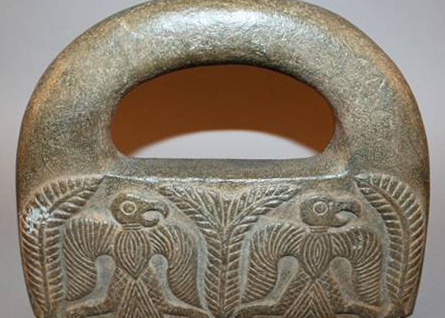
That does seem a little cynical, an intriguing narrative and cultural tradition can do an equally good job as seems to have been the case at Jiroft and the potential transmission of their wisdom tradition merging with Hittite lore through the Kassites, and of equal importance if not more so the interest of Divine forces in maintaining continuity.

edit on Kam831230vAmerica/ChicagoThursday1831 by Kantzveldt because: (no reason given)
originally posted by: Kantzveldt
a reply to: solve
Here we go, wouldn't be a proper handbags thread without that one...
This is the same across many cultures, because in the ancient world you needed a way to transport your provisions.
I have posted you numerous Mesopotamian texts that explicitly state that was what the bucket was used for.
This excerpt for instance is from Lugalbanda in the mountain cave
Directly in front of the table they arranged for him beer for drinking, mixed with date syrup and rolls …… with butter. Provisions poured into leather buckets, provisions all put into leather bags
I think that's pretty definitive, how about you ?
With Quetzcoatl in the la Venta monument, he is also pictured going on a journey, hence he also has a provisions bucket
When it comes to Assyrian priestly or Genie depictions they are using a water bucket to sprinkle holy water/pollen, this is why its often shown with a pinecone, symbol of life and used as a water sprinkler. Sometimes they are watering the tree of life and sometimes they are watering kings. This purification ritual protected against evil spirits
The question of the bucket is answered in detail in Jeremy Blacks "Gods, Demons and symbols of Ancient Mesopotamia
In Neo-Assyrian art, objects resembling a pine
cone and a bucket (or occasionally a bucket
alone) are held as attributes by a number of
different genies, often in association with the
stylised tree; the 'cone' is held up in the right
hand, the bucket held down in the left. Only
very rarely are these objects held by figures
which might be interpreted as entirely human;
almost always they are held by genies or
human-animal hybrids (see demons and
monsters). As well as in front of the stylised
tree, the bucket and cone are seen held before
floral decorative elements, guardian supernatural
figures, the king or his attendants, or
open doorways. The cone has been interpreted
as a fir cone (Pinus brutia), as the male flower of
the date palm or as a clay object in imitation of
such. The bucket has been thought to have
been of metal or wicker, and to have contained
either water or pollen (see stylised tree and its
`rituals'). Written sources on the matter are
few, but it seems clear that the bucket and cone
were associated with purification, for they are
known respectively as bandudd (bucket) and,
significantly, mullitu (purifier), and figurines 11
of genies holding these attributes were among
the types placed within buildings for protection
from malevolent demons and disease
In fact its usage is so well known that wiki even has a page on it
en.wikipedia.org...
Bucket and Cone refer to twin attributes that are frequently held in the hands of various genies depicted in Neo-Assyrian art (and especially palace reliefs) - sometimes, however, only the bucket is held. These objects are often displayed in association with a stylised tree, before floral decorations, guardian figures, the king and / or his attendants and open doorways or portals.[1] The cone was apparently held up in the right hand, the bucket held hanging downwards in the left hand of the figure, which is almost always that of a winged genie or an animal-headed demon or monster (though not necessarily with the same negative connotations) - only very occasionally might these attributes be borne by a fully human figure.
As to the identity of the twin objects, the "cone" is generally recognised as a pine or fir cone (pinus brutia); alternative identifications suggest the male flower of the date palm, or as a clay model imitating the form of one or the other.[2] The bucket was presumably either of metal or basketry and is thought to have held either water or pollen or both.
Although explanatory texts regarding these objects are exceedingly rare, it does seem likely that they were together employed in rituals of purification, as revealed by their Akkadian names: banddudû ("bucket") and mullilu ("purifier").[3] In this case the fir cone would be dipped in the bucket of water before being shaken in order to ritually purify a person or object.[4] Alternatively the close association of the objects with depictions of stylised trees has led to the suggestion that it depicts fertilisation.[4] In this case the pollen from the male flower of the date palm would be being shaken onto the tree.[4]
edit on 18-8-2016 by Marduk because: (no reason given)
The basket was full of mushrooms.
In not too ancient times, shamans would pick mushrooms that contained psycadelic inducing chemicals, and give these to people around the time of the Winter Solstice. Some believe that this is where we have Santa Claus from and not (just) from Saint Nicolas. The people would recieve the mushrooms from the shaman and dry them on a tree before they would consumed them in religious cermonials, just like we hang ornaments on our X-mas tree still today. You don't have to go further back than the 19th century find that mushrooms where symbolic with X-mas, below are some old X-mas card that illustrates this. Also, if you look at some old X-mas cards you see santa with a basket and not a sack - a coincident?
Read more about it here.
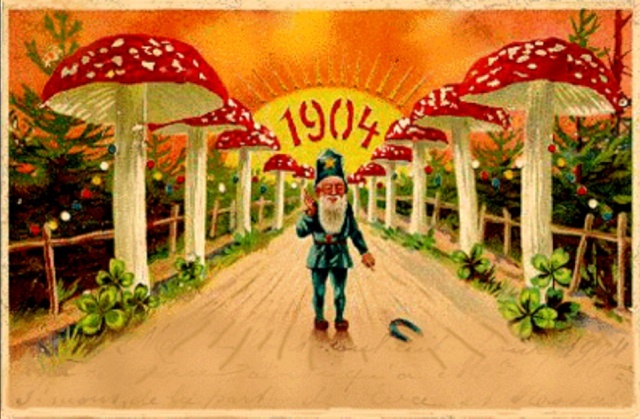
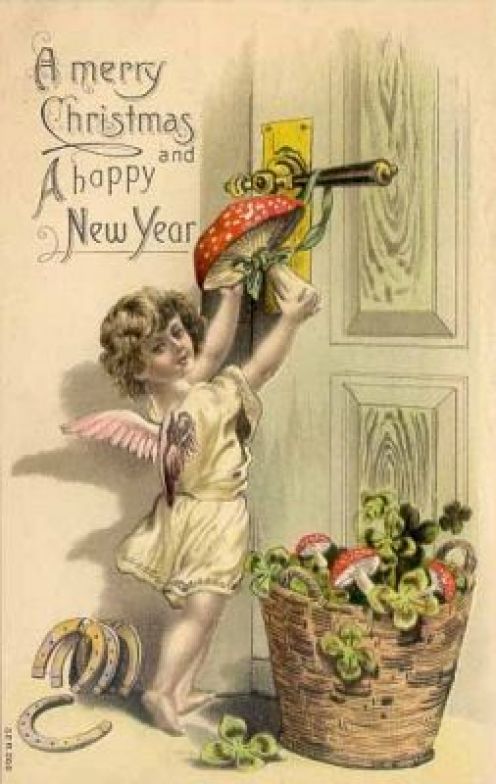
-MM
In not too ancient times, shamans would pick mushrooms that contained psycadelic inducing chemicals, and give these to people around the time of the Winter Solstice. Some believe that this is where we have Santa Claus from and not (just) from Saint Nicolas. The people would recieve the mushrooms from the shaman and dry them on a tree before they would consumed them in religious cermonials, just like we hang ornaments on our X-mas tree still today. You don't have to go further back than the 19th century find that mushrooms where symbolic with X-mas, below are some old X-mas card that illustrates this. Also, if you look at some old X-mas cards you see santa with a basket and not a sack - a coincident?
Read more about it here.


-MM
edit on 18-8-2016 by MerkabaMeditation because: (no reason given)
a reply to: Marduk
Well what do you think was going into the hunting bag...!?!...of course it was provisions that had been hunted and course it could be provisions providing for a long journey, such as going into the afterlife, there is mention with regards to the Kursa of it containing within it a porsel of every animal, it's only been a suggestion that it might have contained water or pollen, or that a pine cone might have been used for sprinkling, i think it more likely that it was an entirely symbolic object similar to those at Jiroft and having no actual function other than what the symbolism related too.
Cups and pitchers were also important funerary goods at Jiroft and illustrate the same related mythos, they are what would have held water or beer, not the bag, indeed the bag was sometimes placed within a bowl to show such relationship.
Purification and regeneration did relate to the essential symbolism of the pine cone with regards to the re-planted tree or pole upon return, the begining of new life.
Well what do you think was going into the hunting bag...!?!...of course it was provisions that had been hunted and course it could be provisions providing for a long journey, such as going into the afterlife, there is mention with regards to the Kursa of it containing within it a porsel of every animal, it's only been a suggestion that it might have contained water or pollen, or that a pine cone might have been used for sprinkling, i think it more likely that it was an entirely symbolic object similar to those at Jiroft and having no actual function other than what the symbolism related too.
Cups and pitchers were also important funerary goods at Jiroft and illustrate the same related mythos, they are what would have held water or beer, not the bag, indeed the bag was sometimes placed within a bowl to show such relationship.
Purification and regeneration did relate to the essential symbolism of the pine cone with regards to the re-planted tree or pole upon return, the begining of new life.
edit on Kam831230vAmerica/ChicagoThursday1831 by Kantzveldt because: (no reason given)
I am loving the restoration myth. How hunting and gathering was brought to the source of that restoration.
Civilized societies that farm and pasture would shy from such practices, except for hunters who in times of need can "save the day" in a manner of speaking.
When lands are barren, fields dry...when animals produce no new generations, when slaughter is a threat to the continuity of livestock.....the hunter prevails by going out into the wild in order to restore the civilization falling into a process of diminishing returns.
Going back to basics in a way....the way it was before the farmer and the pastor
Civilized societies that farm and pasture would shy from such practices, except for hunters who in times of need can "save the day" in a manner of speaking.
When lands are barren, fields dry...when animals produce no new generations, when slaughter is a threat to the continuity of livestock.....the hunter prevails by going out into the wild in order to restore the civilization falling into a process of diminishing returns.
Going back to basics in a way....the way it was before the farmer and the pastor
edit on 8 18 2016 by tadaman because: (no reason given)
a reply to: Kantzveldt
It seems that every poster on the thread so far is looking at the Handbag from their own area of interest, seeing different things.
Much of my life has been consumed in the study of the Bible, so from that perspective and realizing the close relationship between Jerusalem rulers and the Hittites, it seems rather obvious to me that the Exodus and conquest of the land myths drew heavily upon the Hittite tradition. The expansion of territory and establishing the sacred cosmos through the use of a portable deity, ie the ark of the covenant. The Exodus thru Joshua myth obscures the skin bag by turning it into a tent. The Kursa becomes the deity expanding territory by moving through it. The tent supposedly holding the ark is the ark itself, a bag holding some artifact.
Then there's the whole Philistine capture of the ark, the return, eventually ending up in Jerusalem. The Kursa then becomes the god moved into the temple.
As far as invading generals actually entering the temple, their reports have been, "there's nothing here! What, do you people worship darkness?" The holy of holies then becomes the center dark cosmic womb from which the high priest emerges once per year(Yom Kippur) into the light and declares the old year is done, the new has come. The tribal deity accepts us.
In my mind that would explain the pathological obsession that a stone temple with a holy of holies must come into existence, ie Jerusalem is the one and only place in the World wherein a people and by extension all of Western Monotheistic (Atenist, Freemason, Zionists-Judeo/Christian) tradition can re-inter the womb.
The Gnostics, on the other hand, are of the opinion that the light is all they need. Having escaped the womb once, they can live on light alone.
Most Christianity does not need Jerusalem. Baptism serves as entering again into the womb, and rebirth. And the Eucharist serves the purpose of periodic participation in death and renewal. I hope Christians realize this, and do not give it up for a pathological fantasy of one and only one entrance to the womb in Jerusalem.
---------------------------------------------------------------------------------
That seems to be my rant.
As for Athena, I've changed my mind. She started out as a generic city patroness. Later myth making c600s BC, attributed her with aspects of other goddesses.
ETA
Now that I think of it, Telepinu makes a pretty good archetype for the Christ. Baptism, flight into the desert 40 days, found by angels (bees?).
I thought it interesting how this myth could help illustrate many if not all the things we have been recently discussing, that the path back is also the path forward, that without regeneration there will only ever be harsh words and the descent into chaos, and it's important to recognize the continuity in this tradition from the hunter gatherer to the pastoralist to the urbanite, that it needs to be taken forward.
It seems that every poster on the thread so far is looking at the Handbag from their own area of interest, seeing different things.
Research on the Telepinu Myth (CTH 324) has shown that it is an inexhaustibly rich document and that therefore the different, and sometimes conflicting, lines of analysis need to be pursued further.
...
we propose to focus on the privileged position granted to spatial symbols and to hypothesize the function this Myth served in specific contexts of the Hittite history, characterized by the increase and reduction of lands under Hittite jurisdiction.
Much of my life has been consumed in the study of the Bible, so from that perspective and realizing the close relationship between Jerusalem rulers and the Hittites, it seems rather obvious to me that the Exodus and conquest of the land myths drew heavily upon the Hittite tradition. The expansion of territory and establishing the sacred cosmos through the use of a portable deity, ie the ark of the covenant. The Exodus thru Joshua myth obscures the skin bag by turning it into a tent. The Kursa becomes the deity expanding territory by moving through it. The tent supposedly holding the ark is the ark itself, a bag holding some artifact.
Then there's the whole Philistine capture of the ark, the return, eventually ending up in Jerusalem. The Kursa then becomes the god moved into the temple.
As far as invading generals actually entering the temple, their reports have been, "there's nothing here! What, do you people worship darkness?" The holy of holies then becomes the center dark cosmic womb from which the high priest emerges once per year(Yom Kippur) into the light and declares the old year is done, the new has come. The tribal deity accepts us.
In my mind that would explain the pathological obsession that a stone temple with a holy of holies must come into existence, ie Jerusalem is the one and only place in the World wherein a people and by extension all of Western Monotheistic (Atenist, Freemason, Zionists-Judeo/Christian) tradition can re-inter the womb.
The Gnostics, on the other hand, are of the opinion that the light is all they need. Having escaped the womb once, they can live on light alone.
Most Christianity does not need Jerusalem. Baptism serves as entering again into the womb, and rebirth. And the Eucharist serves the purpose of periodic participation in death and renewal. I hope Christians realize this, and do not give it up for a pathological fantasy of one and only one entrance to the womb in Jerusalem.
---------------------------------------------------------------------------------
That seems to be my rant.
As for Athena, I've changed my mind. She started out as a generic city patroness. Later myth making c600s BC, attributed her with aspects of other goddesses.
ETA
Now that I think of it, Telepinu makes a pretty good archetype for the Christ. Baptism, flight into the desert 40 days, found by angels (bees?).
edit on 18-8-2016 by pthena because: (no reason given)
a reply to: Kantzveldt
The bag held water the lizard guys have to have moisture on their skin in those days they had to mist themselves with the "pinecone' and bag.
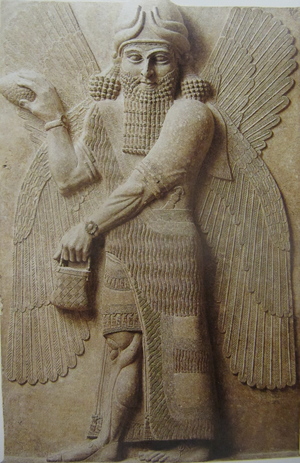
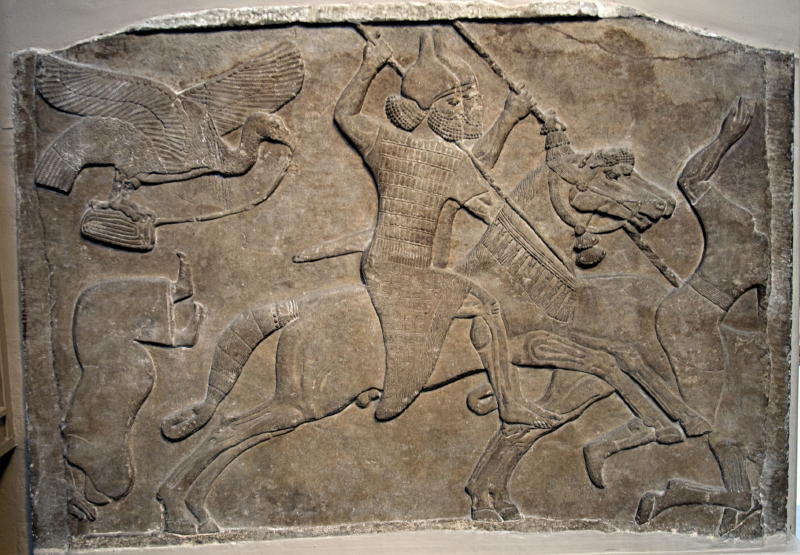
The bag held water the lizard guys have to have moisture on their skin in those days they had to mist themselves with the "pinecone' and bag.


edit on 18-8-2016 by SeaWorthy because: (no reason given)
originally posted by: SeaWorthy
a reply to: Kantzveldt
The bag held water the lizard guys have to have moisture on their skin in those days they had to mist themselves with the "pinecone' and bag.
That's not a lizard guy in the picture, can you upload one that is.
originally posted by: Kantzveldt
I'm going to throw some random, not entirely sober thoughts out there, based solely upon this pillar from Göbekli Tepe. I'm normally into context & all that jazz, but whatever.
I'm of the opinion that this could be an early symbolic representation; the individual has been 'sky-buried' (placed on a hilltop to be eaten by carrion feeding birds/vultures), & his/her head is being escorted by the psychopompic vulture to the heavens. The decapitated 'head' is purely circular, which makes me think it carries meaning beyond the literal. Then, those Kursa (handbags) in the sky above... To me, it suggests the afterlife as a land of plenty, containing huge bags (presumably full of goods).
Taken a step further, the Kursa could could even represent the symbolic womb for the head/soul in the afterlife. The ultimate 'good' or provision. Anyway, I'm wading out into pure speculation so might stop there.
a reply to: Marduk
Those parts bother me, held by various genies,or animal headed monsters and about opening portals and or gateways,
You see, those are frequently associated in all kinds of rituals and initiations, and if you look at the belief systems of indigenous tribes all over the world, almost all of them still do the same thing, what their ancestors did.
But keep in mind, this is just my silly opinion,
Those parts bother me, held by various genies,or animal headed monsters and about opening portals and or gateways,
You see, those are frequently associated in all kinds of rituals and initiations, and if you look at the belief systems of indigenous tribes all over the world, almost all of them still do the same thing, what their ancestors did.
But keep in mind, this is just my silly opinion,
a reply to: Kantzveldt
Your point is more rational, and most likely true,
I just happen to be an extremely irrational person, always looking at the impossible and unlikely.
Your point is more rational, and most likely true,
I just happen to be an extremely irrational person, always looking at the impossible and unlikely.
originally posted by: SeaWorthy
a reply to: Marduk
That's not a lizard guy in the picture, can you upload one that is.
Yeah that's one of those lizard guys, shape shifted. i think they needed moisture to keep the skin on
Natural form
You associated that figure with a water bucket, but there isn't one, are you suggesting that the bucket being symbolic, isn't necessarily needed to match your imagination?
originally posted by: solve
a reply to: Marduk
Those parts bother me, held by various genies,or animal headed monsters and about opening portals and or gateways,
You see, those are frequently associated in all kinds of rituals and initiations, and if you look at the belief systems of indigenous tribes all over the world, almost all of them still do the same thing, what their ancestors did.
But keep in mind, this is just my silly opinion,
tbh, I think you've fallen foul of a classic mistake made by novice researchers.
To wit, if you go looking into mythology, looking for similarities you will always find them
the classic example of this trait would be flood stories. There are hundreds of them from distantly non related cultures. At first look, it would seem that the only possible reason this could be true, is that they are all talking about one great global flood. And as a typically Judaeo-Christian culture we find that easy to accept. But the truth is that the flood stories differ widely in detail, time, place with the only commonality being water. Science of course holds the answer that we live on a planet which is 4/5 water and flooding is common. It would indeed be odd if a culture hadn't experienced several
So maybe, if you look specifically at the details surrounding the figures you speak of, then that one similarity which draws you, isn't really so relevant, but you still win, because you will have learned a valuable lesson while also increasing your knowledge
a reply to: Marduk
Marduk, did vultures serve a strong or consistent symbolic function in Sumerian mythology? Were they often depicted carrying heads or near decapitated bodies?
I'm vaguely familiar with Anzu, who I'm reading about further at the moment. Seems he was originally benign until around 4000 years ago when he rebelled, was depicted differently. Was there an earlier vulture cult present, & did they practise sky burial?
(all good if you can't be #ed answering, I'm sure I'll get to it in my reading!)
Marduk, did vultures serve a strong or consistent symbolic function in Sumerian mythology? Were they often depicted carrying heads or near decapitated bodies?
I'm vaguely familiar with Anzu, who I'm reading about further at the moment. Seems he was originally benign until around 4000 years ago when he rebelled, was depicted differently. Was there an earlier vulture cult present, & did they practise sky burial?
(all good if you can't be #ed answering, I'm sure I'll get to it in my reading!)
originally posted by: Saturnschild
a reply to: Marduk
Marduk, did vultures serve a strong or consistent symbolic function in Sumerian mythology? Were they often depicted carrying heads or near decapitated bodies?
Vultures were seen as harbingers of death in Sumerian tradition, so they are usually depicted on the winning teams side.
source
The historical side is divided into four horizontal registers. The upper register shows Eannatum, the ensi or ruler of Lagash, leading a phalanx of soldiers into battle, with their defeated enemies trampled below their feet. Flying above them are the vultures after which the stele is named, with the severed heads of the enemies of Lagash in their beaks
Apart from the stele of the vultures, which is from the end of the Sumerian period, that's about all there is from Sumer about vultures, apart from this
etcsl.orinst.ox.ac.uk...
Where the Vulture is attached to the word "weaver",
I have no idea why...
Always happy to answer serious questions, thanks
edit on 18-8-2016 by Marduk because: (no reason given)
new topics
-
Rep. Alexandria O. Cortez Says Forcing People to Use The Correct Bathroom is Dangerous.
US Political Madness: 3 hours ago -
Cooperation zones
World War Three: 4 hours ago -
Ok this is some BS now WTH
Rant: 6 hours ago -
France gives Ukraine license to fire long-range missiles at Russia
World War Three: 8 hours ago -
Stalker 2 - Review from a Veteran
Video Games: 11 hours ago
top topics
-
France gives Ukraine license to fire long-range missiles at Russia
World War Three: 8 hours ago, 9 flags -
Most INSANE internet rabbit hole
Secret Societies: 12 hours ago, 8 flags -
Joe Rogan conspiracy (maybe)
ATS Skunk Works: 16 hours ago, 5 flags -
Ok this is some BS now WTH
Rant: 6 hours ago, 3 flags -
Cooperation zones
World War Three: 4 hours ago, 3 flags -
Rep. Alexandria O. Cortez Says Forcing People to Use The Correct Bathroom is Dangerous.
US Political Madness: 3 hours ago, 3 flags -
Stalker 2 - Review from a Veteran
Video Games: 11 hours ago, 2 flags -
Does anyone have a link to download apple pay for androids
General Chit Chat: 12 hours ago, 1 flags
active topics
-
France gives Ukraine license to fire long-range missiles at Russia
World War Three • 14 • : Astrocometus -
Cooperation zones
World War Three • 13 • : VariedcodeSole -
Mood Music Part VI
Music • 3714 • : Hellmutt -
Rep. Alexandria O. Cortez Says Forcing People to Use The Correct Bathroom is Dangerous.
US Political Madness • 15 • : BernnieJGato -
-@TH3WH17ERABB17- -Q- ---TIME TO SHOW THE WORLD--- -Part- --44--
Dissecting Disinformation • 3364 • : 777Vader -
Inca stone masonry at Sacsayhuaman, Ollantaytambo and the Sun Temple
Ancient & Lost Civilizations • 15 • : randomtangentsrme -
Ok this is some BS now WTH
Rant • 5 • : BingoMcGoof -
Dr Cambell talking about using worm meds for cancer
Medical Issues & Conspiracies • 24 • : ADVISOR -
President-Elect TRUMP Picks Former Florida A.G. PAM BONDI to be U.S. Attorney General.
2024 Elections • 65 • : VariedcodeSole -
Well, here we go red lines crossed Biden gives the go ahead to use long range missiles
World War Three • 332 • : Tolkien



